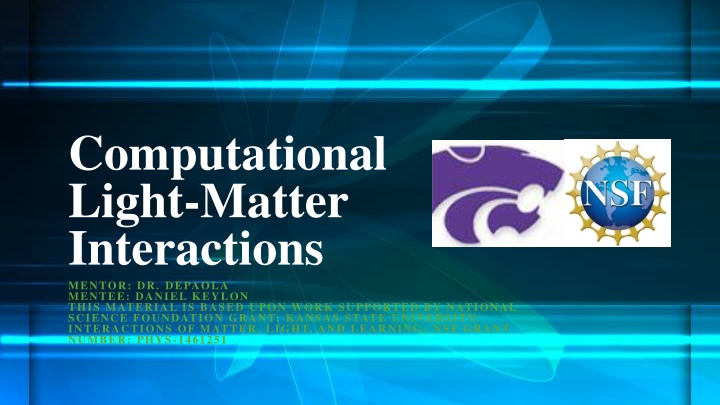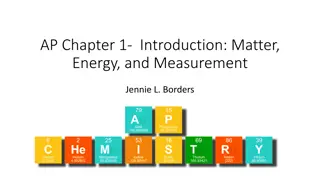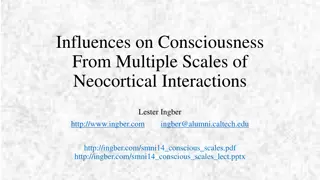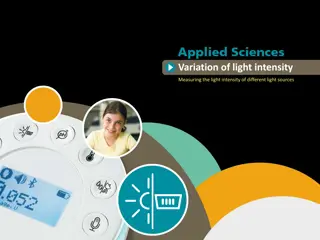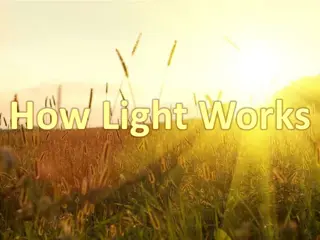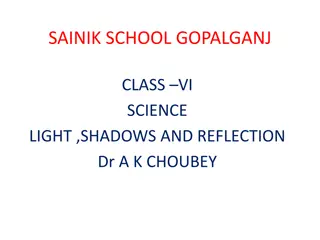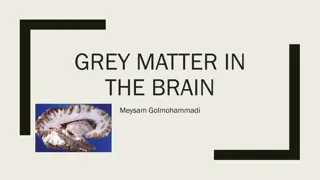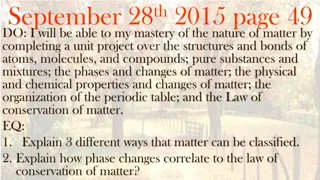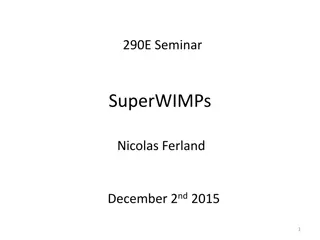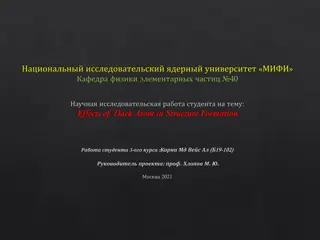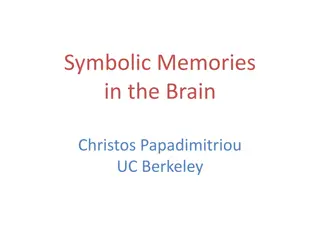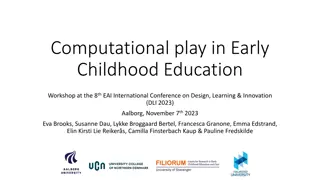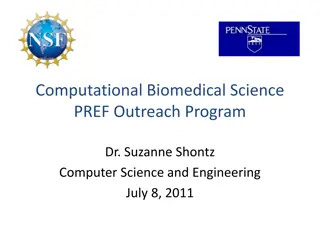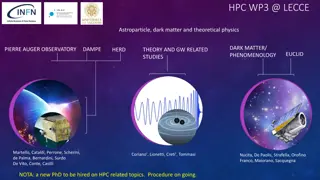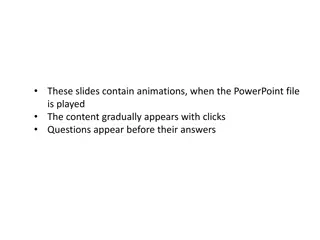Computational Light-Matter Interactions: A Theoretical Approach
Explore the fascinating realm of computational light-matter interactions through a theoretical solution to experimental problems. Delve into the unifying equation, rate equation building, Hamiltonian development, and decay rate calculations in this insightful study. Parameter graphs provide a visual representation of energy levels and laser transitions. This material, supported by a National Science Foundation grant, offers a deep dive into the intricate dynamics of matter and light interactions.
Download Presentation

Please find below an Image/Link to download the presentation.
The content on the website is provided AS IS for your information and personal use only. It may not be sold, licensed, or shared on other websites without obtaining consent from the author.If you encounter any issues during the download, it is possible that the publisher has removed the file from their server.
You are allowed to download the files provided on this website for personal or commercial use, subject to the condition that they are used lawfully. All files are the property of their respective owners.
The content on the website is provided AS IS for your information and personal use only. It may not be sold, licensed, or shared on other websites without obtaining consent from the author.
E N D
Presentation Transcript
Computational Light-Matter Interactions MENTOR: DR. DEPAOLA MENTEE: DANIEL KEYLON THIS MATERIAL IS BASED UPON WORK SUPPORTED BY NATIONAL SCIENCE FOUNDATION GRANT: KANSAS STATE UNIVERSITY: INTERACTIONS OF MATTER, LIGHT, AND LEARNING; NSF GRANT NUMBER: PHYS-1461251
Background An Experimental Problem A Theoretical Solution with Caveats Scaling Tedium Modifying system A Computational solution to the problems with our solution.
A Computational Solution to a Physical Problem The picture to the left is a 4-level atomic energy system. Each black bar is a distinct energy level. The blue dotted lines represent the detuning of the laser from resonance. The s represent this detuning in units of Hz. The black vertical arrows represent the energy transitions that the lasers cause the system to undergo. The red vertical arrows represent energy transitions due to spontaneous emission. The numbers on the far left are merely the quantum numbers that denote each energy level.
Rate Equation Building The 1st Equation: The commutator definition Also the population change rate equation for cases without spontaneous emission. The 2nd Equation: The full equation with spontaneous emission. The 3rd Equation: Method for deriving the Gamma-Rho matrix.
Enter the Hamiltonian Development of the Hamiltonian Apply Dipole Approximation More Approximations Set potential energy of ground state to 0 The Hamiltonian appears!
The Final Piece Decay Rate Calculations Wigner Coefficients Not Matrices Reduced Matrix Element Database of Values
Parameter Graphs! Energy Levels: 5s1 2, 5p3 2, 6p3 2, 5d5 2 No Hyper-Fine splitting; 2 Laser Transitions For 5s1 2 to 5p3 2: q = 0 (The laser is linearly polarized) Detuning = 1 GHz Intensity = 1000 ?? ??2 For 5p3 2 to 5d5 2: q = 0 (The laser is linearly polarized) Detuning = 0 GHz Intensity = 1000 ?? ??2
Graphs+ Energy Levels: 5s1 2, 5p3 2, 6p3 2, 5d5 2 All levels Hyper-Fine split; 2 Laser Transitions For 5s1 2_F=1 to 5p3 2_F=1: q = 0 (The laser is linearly polarized) Detuning = 1 GHz Intensity = 1000 ?? ??2 For 5p3 2_F=1 to 5d5 2_F=1: q = 0 (The laser is linearly polarized) Detuning = 0 GHz Intensity = 1000 ?? ??2
Graphs++ Energy Levels: 5s1 2, 5p3 2, 6p3 2, 5d5 2 All levels Hyper-Fine split; 2 Laser Transitions For 5s1 2_F=1 to 5p3 2_F=1: q = 0 (The laser is linearly polarized) Detuning = 1 GHz Intensity = 1000 ?? ??2 For 5p3 2_F=1 to 5d5 2_F=1: q = 0 (The laser is linearly polarized) Detuning = 0 GHz Intensity = 1000 ?? ??2
Graphs Extended Same parameters as last Except: 1 new laser: 5s1 2_F=2 to 5p3 2_F=2 All polarities now = 1(right circularly polarized)
Bibliography B. D. Depoala, Notes for Lectures on Coherent Excitation B. D. Depoala, Wigner relationships connecting fully differential dipole matrix elements to reduced matrix elements, (Department of Physics, Kansas State University, Manhattan, Kansas 66506-2601), June 26, 2015 B. D. Depoala, personal communication
